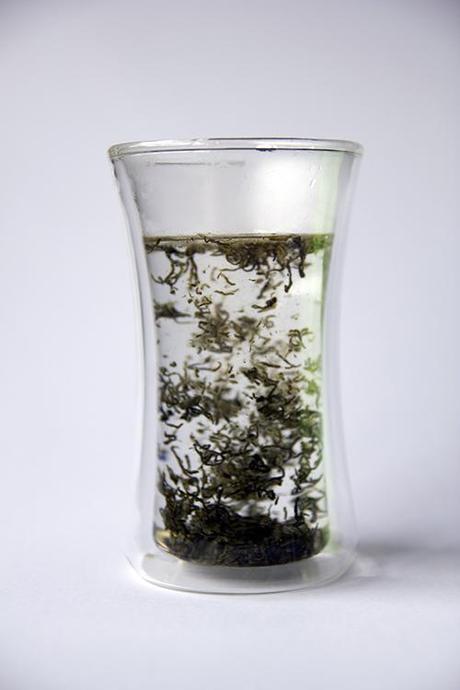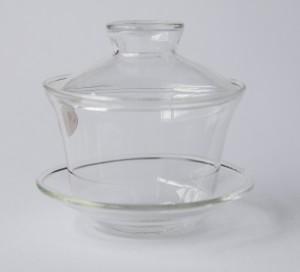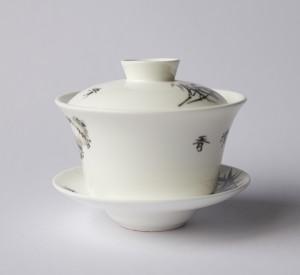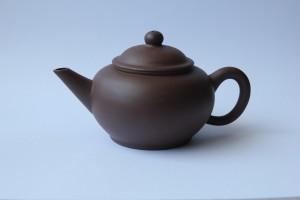One theme we have repeatedly stressed and will continue to do so is the importance of brewing. In this post we will discuss another aspect of brewing tea- the brewing vessel.
To cut to the chase, which brewing vessel is the best?
The simple answer is it depends on which tea.
Different categories of teas have different production methods and characteristics, it would be impossible for one single vessel or brewing methodology to cover them all.
Let us take a look at each category and some recommended vessels:
Recommended Brewing Vessel for Green Tea

In addition, for most green teas, it is not recommended that the vessel be entirely covered as the heat would result in the tea being overly ‘stewed’ and losing much of its beloved refreshing quality. This is in contrast to other types of tea where the heat retention is crucial to unlocking the fullness of the flavors.
All that taken into consideration, one of the most popular brewing vessels for green tea is a drinking glass. Visually, it allows the leaves to swirl and unfurl.
In addition, it is the epitome of brewing convenience- add leaves (or add water first depending on the type of tea), add water, drink to 1/3, add water, drink to 1/3, add water and drink it all up.
It doesn’t get any simpler than that. Of course there are some guidelines regarding brewing green tea out of a drinking glass.
The heat loss of the glass, coupled with decent quality green tea leaves prevents the green tea from tasting bitter.
The heat loss though also results in a loss of aroma hence you could also use a gaiwan to coax more taste out of your green tea. Using a glass gaiwan would also marry the two but a note of caution, glass is a poor heat insulator and glass gaiwans are seldom thick enough. Hence you can easily scald your fingers.
Infuser mugs are also quite ideal for green tea- apart from the inability to watch the leaves- since green tea leaves generally do not need that much space to expand unlike oolong tea especially. This also provides a convenient way to enjoy green tea in the office.
Recommended Brewing Vessel for White and Yellow Tea

A gaiwan is a good brewing vessel for white and yellow teas and some teas such as Silver Needles would also provide a visual feast, hence a glass gaiwan would work well.
While the leaves of the White Peony can be pretty huge, it is not rolled. In other words, if it fits into the vessel, it doesn’t need more space to unfurl. Hence an infuser mug is also a viable option for white and yellow teas, especially in the office.
Recommended Brewing Vessel for Oolong Tea

i) Heat retention- oolongs need sustained heat to unleash its full flavor
ii) Space for the leaves to unfurl- oolong tea leaves tend to be among the biggest since they are made from matured leaves
iii) Size- oolong teas retain their taste best in smaller vessels, ideally 200cc and below
Naturally there is a conflict between ii) and iii) hence ideal vessels for brewing oolong is wider and shorter to maximize the space for leaves to expand without allowing the vessel to be too big in capacity.
Yixing pot for oolong tea
The good old Yixing pot is the ideal vessel for brewing oolong tea with unmatched heat retention. In addition, genuine Yixing pots retain the flavor of teas brewed in it and are seasoned over time. Hence over time, teas brewed in it become increasingly flavorful.
The downside is that unless you want your tea to taste like a mishmash of teas brewed in it, you should stick to one Yixing for each type of tea.

It’s a tightrope between practicality and taste.
Unless you have a short list of teas that you regularly drink, it would take a long time to season your Yixing pots. Not to mention the fact that genuine Yixing pots are expensive, how many are you prepared to buy?
On the other hand, you don’t want your pot to be well-seasoned with your entire oolong tea experience.
I would recommend minimum 2 Yixing pots- one for heavily roasted teas and one for light to mid-roasted teas since these 2 would present the most distinct taste spectrums in my opinion.
Gaiwan for brewing Oolong
The gaiwan is one of my go-to brewing vessels, especially since this is presents the tea in its original form- adding or subtracting nothing from the original taste- essential for tea buyers.
Porcelain or bone china is ideal for brewing oolong since it retains heat better and the white colors is preferred for observing the liquor and wet leaves.
Recommended Brewing Vessel for Black Tea
Like oolong teas, black teas are generally brewed with high temperatures although some black teas made from pure buds could benefit from lower infusion temperatures.
For black teas, the key is aroma and it is best brewed in a ‘closed vessel’ with good retention.
A china gaiwan or teapot works well for black tea as does a Yixing pot.
Recommended Brewing Vessel for Dark Tea

At the same time, unlike oolong teas where higher water temperature generally is paired with shorter steeping times and vice-versa dark teas are brewed with boiling water for a longer steeping period- about a minute or so.
If you are using a gaiwan, make sure the material is a good insulator and of suitable thickness- bone china for example- else your fingers will be easily scalded.
As such, a Yixing pot would be the best for brewing dark tea. As for the segregation, generally you should separate a ‘Sheng Puer’ pot from other dark teas. Some people segregate by mountain and factory as well but again, cost is a consideration.
Recommended Brewing Vessel (Overall)
If you don’t intend to buy a lot of vessels, a gaiwan- preferably a porcelain or china one- would suffice for all your basic needs. Or a shouzhuawan which we describe as a ‘gaiwan on training wheels’.
